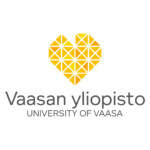Aiming for visibility into real-time data and the future
The project portfolio was introduced at the University of Vaasa last year. It was expected to increase transparency and support reporting and knowledge management. “Data-driven portfolio management has not been possible before because the information has been fragmented and reliant on people’s recollection,” says Tapio Männistö from the University of Vaasa’s Finance and Project Management Services.
The development journey of portfolio management has been a smooth one. Today, data is in one place in a quantifiable and comparable format. According to Tapio, the conditions have been fruitful and knowledge-based management has progressed. The timeliness of data is therefore much in the spotlight. “The ambition has been to record data as it is produced, so that it is always up-to-date and valid,” says Tapio. ” We are moving from looking in a foggy looking rear-view mirror and starting to look ahead so that we can also see trend curves.”
You can start your development journey with a light load
The project portfolio was developed on top of an Excel-based solution. Tapio found that you can go into the first definition workshops quite casually, and you don’t need to have the answers ready. “There was nothing to compare it with when it came to creating a completely new system and function chain around the software,” says Tapio. On the other hand, it was also nice not to have to unlearn from the old application.
The portfolio was implemented last year and the first year has been all about developing project management. It was important to start with small enough steps. “We realised that we needed to focus on project management and data creation first in order to manage the whole portfolio,” says Tapio. The idea is that the next year the focus will be on portfolio management and developing digitalisation and knowledge management.
Successes, challenges, and positive surprises
Tapio has found that understanding why data is collected helps to see how it genuinely brings value to the end user. In his opinion, the great moments in the development process have been when people have suddenly understood what the portfolio can be used for. “For example, the ability to see dependencies, log tasks within projects and export information directly to emails has added value for users.”
Dialogues have been an important part of change management. “It’s important to be able to justify why something is being done and why it’s worth producing data,” says Tapio. He thinks that making guidelines, videos and training sessions is fun, and there should be some. However, if no one watches the video or attends the training, they will not get the desired benefits. “You reach the target audience by actually meeting people,” says Tapio.
In addition to the successes, the journey has provided good lessons for the future. The biggest challenge on the development journey has been that change agency is largely the responsibility of one person. In hindsight, Tapio thinks that the roll-out could have gone even more smoothly if there had been more responsibility at the unit level of the organisation.
The project portfolio has helped with reporting and management has also benefited from the knowledge collected in the portfolio. The data generated in different units can now be compared thanks to the quantitative format. Another important benefit is the ability to budget resources using the portfolio. The portfolio has made it possible to determine how much staff is allocated to projects versus line work.
The portfolio allows access to information in real time rather than reacting after the fact. “It’s great to think that information is in one place, rather than having to search through people’s heads and email files,” says Tapio. The aim is that in the future, as much information as possible will also be generated automatically.
The journey with Thinking Portfolio continues
Working with Thinking Portfolio has been easy and straightforward. Tapio says that discussions have gone well and changes have happened quickly: “The whole delivery chain has been smooth and agile, and we have been well understood.” The Project Portfolio app has also received positive feedback from users: “The software is easy to use and intuitive, it works logically.”
Tapio Männistö
Tapio Männistö, Specialist, Finance and Project Administration at University of Vaasa

Text: Tyyne Taunila, Marketing Specialist, Thinking Portfolio








